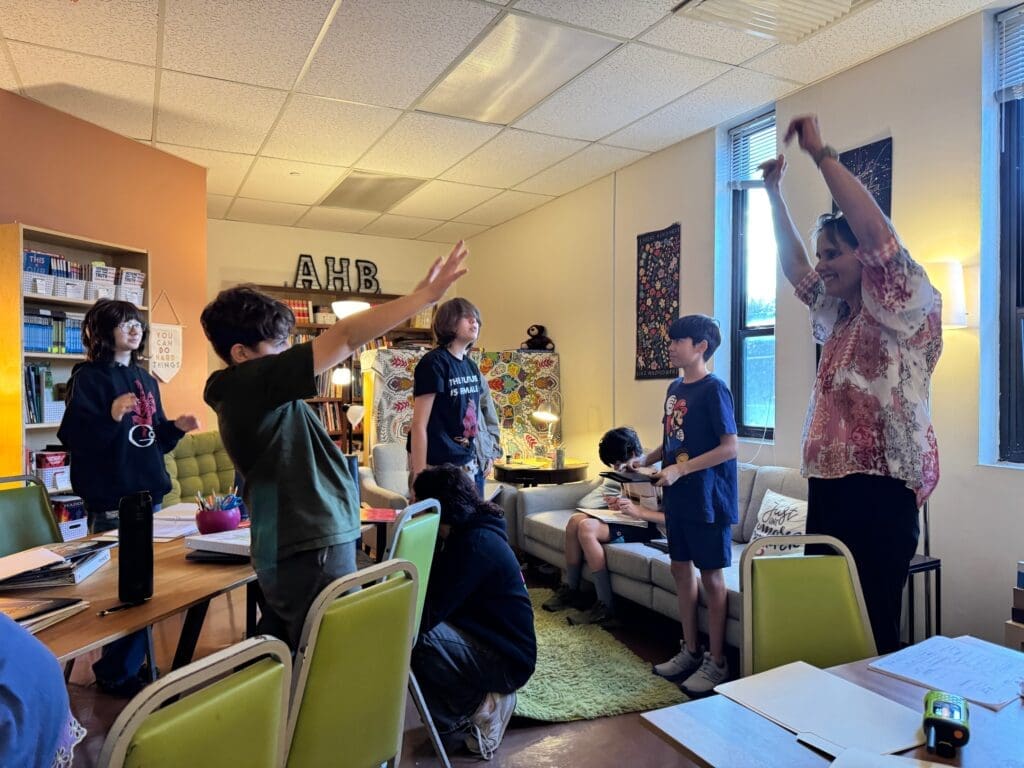Math:
The Marionettes and Saplings started their week with unit reviews and check-ins. They then dove into their next units, geometry and probability, respectively. The Vroomshrooms started factoring quadratic functions in order to find roots this week. They ended the week with an activity where given a graph they had to write the vertex, standard, and factored form of the quadratic function.
ELA:
On Monday we discussed what’s happening in our novels and finished the idiom paintings we started last week. Tuesday we kicked off class with a quick write about their novels. Marionettes, a wise person once said, “Every ending is a new beginning.” Explain this and give examples from The Fourteenth Goldfish. Saplings and Vroomshrooms, do you think Calpurnia has evolved? Explain your opinion with evidence from The Evolution of Calpurnia Tate.
The rest of our week was spent learning about mood and tone in literature and how an author reveals these through the careful choice of words and phrases. Students participated in activities like charting their feelings toward specific events on a “mood meter.” They considered the energy level and pleasantness of situations like reading on a rainy day and being chased by a rabid dog. They deepened their understanding by watching https://youtu.be/0-7Ucg5GKnw, taking notes about mood and tone, color coding descriptive details about setting and characters in a mentor text, and acting out the different ways you can say phrases like come on, get in, and let’s go.
Theme:
Organisms in their environment has become a popular Theme topic for the middle schoolers. We started the week by students completing their mini-project creating their own creatures from 10 different adaptations. They sketched, colored, and labeled these adaptations as the students described the organisms in their habitats. We will finish this project by composing essays about these new creatures.
We started a new topic on Evolution with an online simulation. Students engaged in observation and calculation of the growth of bunny populations in unchecked habitats, where bunnies TOOK OVER THE WORLD! The simulation introduced environmental controls on the bunny population, including predators and food scarcity. Students then determined the proportion of population loss due to these factors. The adaptations to the different landscapes helped some bunnies but hurt others. The simulation showed that organisms survive and thrive each generation through Natural Selection, and we looked at the theory first proposed by naturalist Charles Darwin.
We finished the week with a review of adaptations in a d gallery walk, and progress on the Q4 Organism projects, which will be due on May 13th. Students also learned about our field trip to the Cameron Park Zoo in Waco on May 15th. Permission forms go out next week.


Above: Marionettes work together to identify descriptions of setting and characters.
Below: Saplings brainstorm different tones for saying “come on.”


Above: A Sapling marks her mood on the sticker chart. Below: A Marionette dries his idiom painting so he can layer on details with markers.


Students participate in a team building exercise building a zoo and creating animals in Flex.



At top left, a feathered friend visited the playground looking for resources for a nest. At top right and above, students complete an Escape Room exercise to review adaptations.

Students work on their Creature Adaptations project in Theme class. After using probability to assign different variations, students developed the new organisms and habitats.


Learning and playing in Middle School. Students modeled evolution in a rock paper scissors game, then gathered for play on the ropes challenge during recess.




